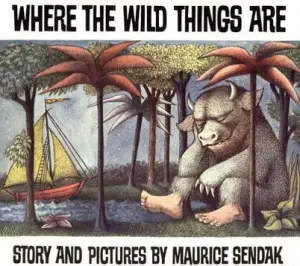
I must admit, I was never a huge fan of the book, Where the Wild Things Are, by Maurice Sendak as a child. I was born two years after the book was published on April 9, 1963. Then, by the time I was old enough, I was more interested in getting outside and playing than reading. I had friends that said they had read it and loved it. So finally, I picked up the book in my preteen years. I loved it, I understood it, and it had meaning. Why wait like I did, though? At A Grade Ahead, our English program gives students an opportunity to read different kinds of fiction to help spur their imagination.
Reading fiction, like Sendak’s Where the Wild Things Are, broadens our imaginations and strengthens our thinking processes. By transporting us to different imagined realities, it exposes us to new concepts and situations. This activity enriches our minds and assists us in comprehending new ideas.
For my first book vs movie review, I decided to re-read “Where the Wild Things Are,” as well as re-watch the movie, which originally premiered in 2009, forty-six years after the book was published.
The Book
Where the Wild Things begins with the main character, Max, misbehaving and making a mess. He “made mischief of one kind and another…” and is illustrated in his wolf outfit, chasing a dog with a fork. This results in him being banished to his room without supper. His mother calls him a “wild thing,” and Max responds with, “I’ll eat you up!” In his room, with his eyes closed, his imagination turns his bedroom into a forest, and a boat appears. Because his mother referred to him as “wild thing,” Max intends to go to the island where the wild breasts live. Max is angry. However, Maurice Sendak does not state this directly, but rather shows Max’s emotions through his illustrations.
Max sets sail for the country of the wild beasts: enormous, clawed monsters. Max is unafraid of anything and manages to calm the wild creatures, who acknowledge him as the wildest of them all and crown him as their king. Probably the most popular line in the book, Max orders, “Let the wild rumpus start,” and together with the wild creatures, they dance under the moon, swing from trees, and generally get into mischief.
Max comes to the realization that he misses his mother’s affection. He becomes lonely and decides to go home to where he is loved most of all. Despite the wild beasts’ pleas for him to stay, he sails home, where he finds his supper waiting for him in his bedroom. Max’s exploits show how amazing children’s imaginations are. When emotions become confusing, their imaginations can carry them to any place they wish. But they can always return to the place where they feel safe and loved, and everything will turn out alright.
The Movie
The movie, Where the Wild Things Are, directed by Spike Jonez, is an intriguing interpretation of the book. The film begins similarly to the book, with Max once again in his wolf outfit chasing a dog with a fork. But from that point, there are choices that make the film feel a bit disconnected from the book. For example, Jonez does a good job of illustrating childhood angst. During a scene featuring a raucous snowball fight, he shows how a child’s emotions can shift from pure joy to pure pain in an instant. But this is only the first fifteen minutes of the film; from this point, the film felt long to me, and there were times when I wasn’t really engaged. This may be because there wasn’t enough content in the original Sendak story to warrant a full-length film.
That being said, Jonez does take inspiration from Sendak’s illustrations, which help to fill out the original book. The monsters are recognizable and very well-done. Nonetheless, the film is likely more appealing to an older audience who recall a favorite childhood book, rather than children who have not previously experienced the magic of Maurice Sendak.
What do you think? Are you a fan of Maurice Sendak and Where the Wild Things Are? Do you prefer the book or the movie? What “Book vs. Movie” would you like us to explore next? We would love to hear from you in the comments!
Interested in learning more? Call or visit your nearest A Grade Ahead Academy, and ask about our programs!
Author: Pamela Crum, Teacher Coordinator at A Grade Ahead.

I am a HUGE WTWTA fan!!! The book is one of my absolute favorite books of my childhood. I may give and/or suggest it to every parent, especially of boys. I even just started my TikTok, named after the book, because I’m in hopes of doing lives with children’s stories. I do like the movie, but I’m a book lover through and through.